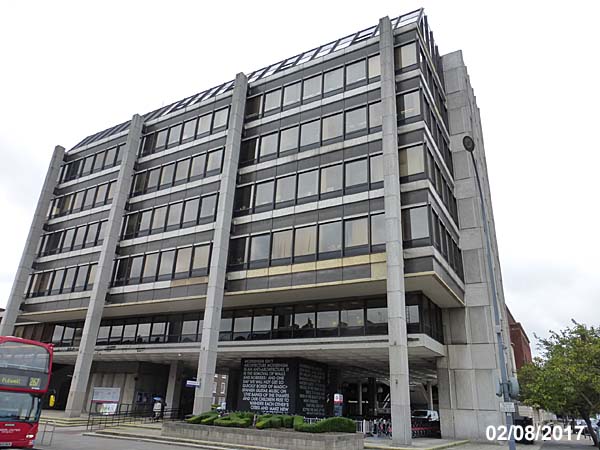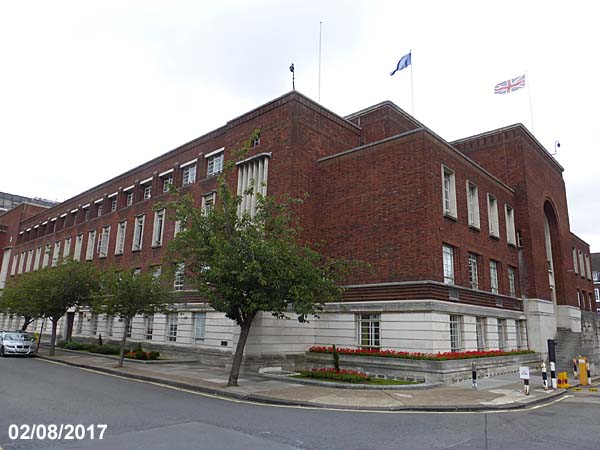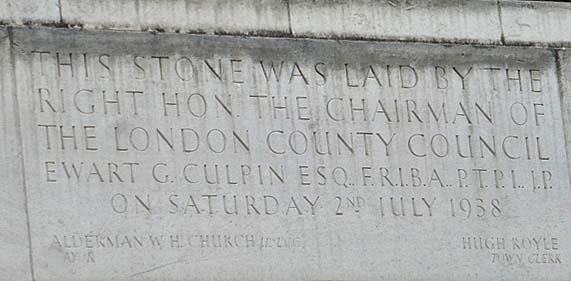
This Grade II Listed
Town Hall building sits in a less than
auspicious setting. It has the
Great West Road at its front, with heavy
traffic roaring by, and the unloved
1970s extension between it and King
Street. In 1981 it was given
listed status because it was regarded as
a fine example of an inter-war town hall
reflecting both modern and classical
elements. The listing notes said
that it is, "... a building of
bold presence; the quality of
materials, craftsmanship and
detailing are of a high standard
throughout. .... The interior
features a ... good
survival of joinery, fittings and
finishes (and) the
set of murals in the public entrance
hall are splendid examples of the
genre by notable C20 artists."
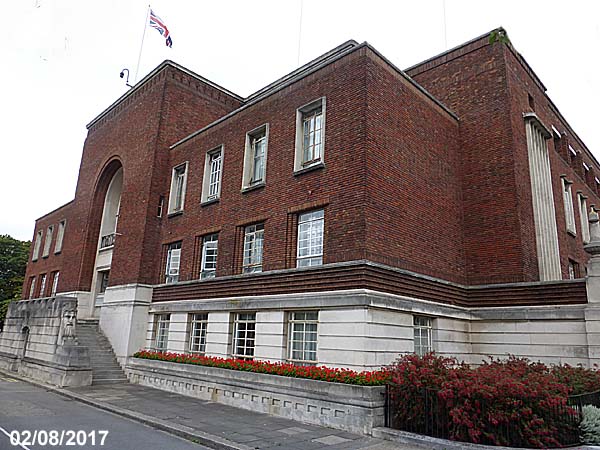
"The town hall
comprises two parts: that to the south,
(see above) facing the River
Thames across the Great West Road,
contains the civic rooms and municipal
offices; and that to the north, facing
King Street, (see below)
contains the public spaces. The
principal rooms to both parts are
located at first and second-floor
levels. The larger southern section is
arranged around four sides of a
courtyard."
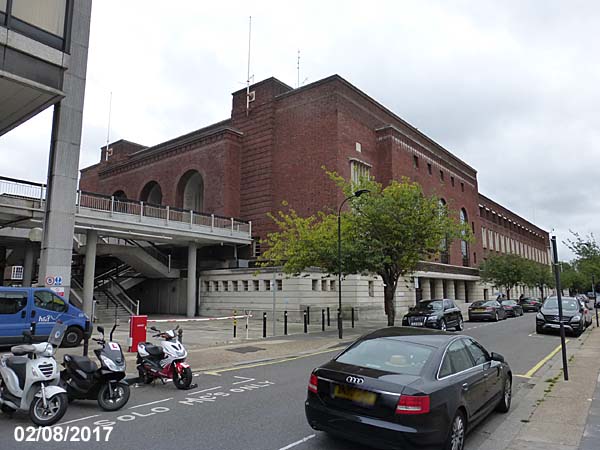
The facade is of red-purple brick with
Portland stone dressing.

The inner courtyard is dressed in yellow stock
brick.
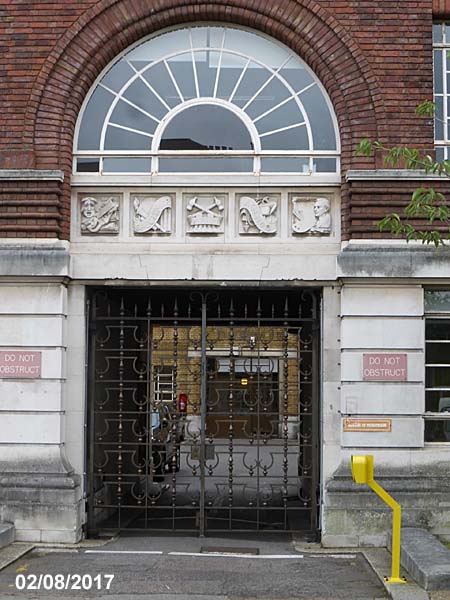

The motto above the entrance to the courtyard
reads "
Spectemur Agendo"
or
"Let us be judged by our acts"
"The first-floor
entrance (now blocked) is reached via a
stone perron stair faced with a rusticated
wall, which has a small entrance to the
ground floor. The wall is carved at either
end with colossal carved heads depicting
Father Thames, sculpted by George
Alexander."
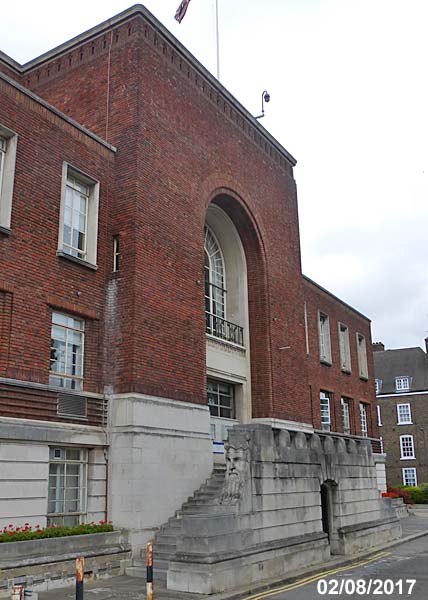
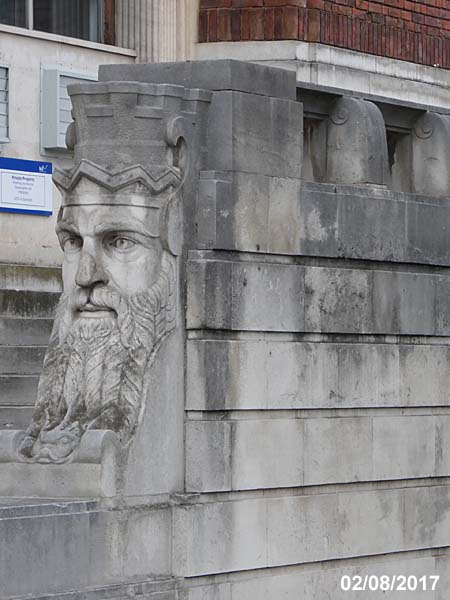
**********************************
In 1974-5 an extension
was added in what had been a public space at
the King Street end of the building.
This brutalist building is not part of the
Listing and there have been calls for some
time to refurbish or demolish it.
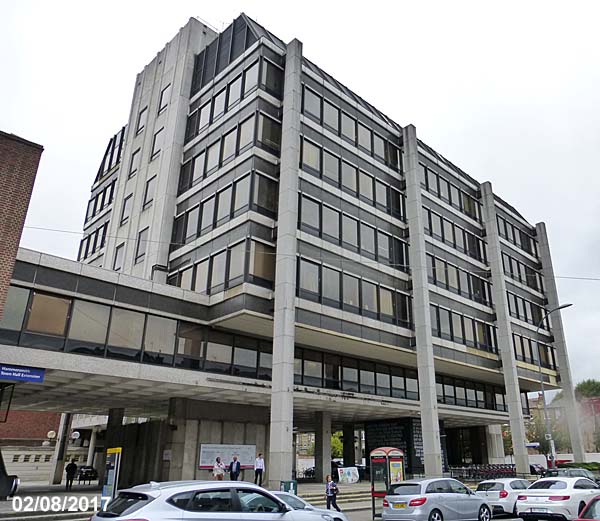
An article on the "designbuild-network.co"
website outlines plans for the regeneration
of King Street. It explains that, "
...
The project primarily involves the
refurbishment of the Town Hall Extension
and the Grade-II listed Town Hall. The
surrounding areas will be regenerated by
providing new offices for the council,
196 residential houses, a new three
screen cinema, shops, restaurants and
bars, and a new public town square. ....
The Town Hall extension building will
partially be demolished and rebuilt,
incorporating a nine metre glass gateway
through to the public piazza behind,
bringing the Town Hall back into the
view from King Street. The Town Hall
building and the new residential
buildings will have exteriors with
textured brick cladding and glazing."
